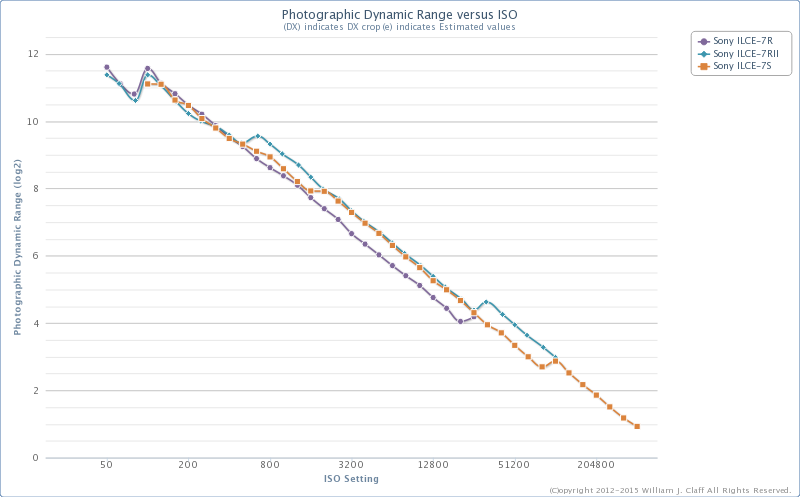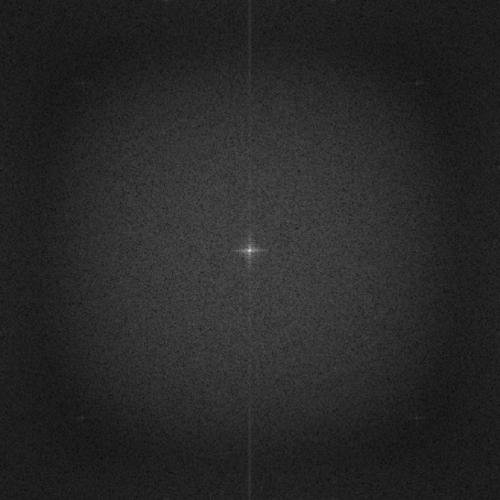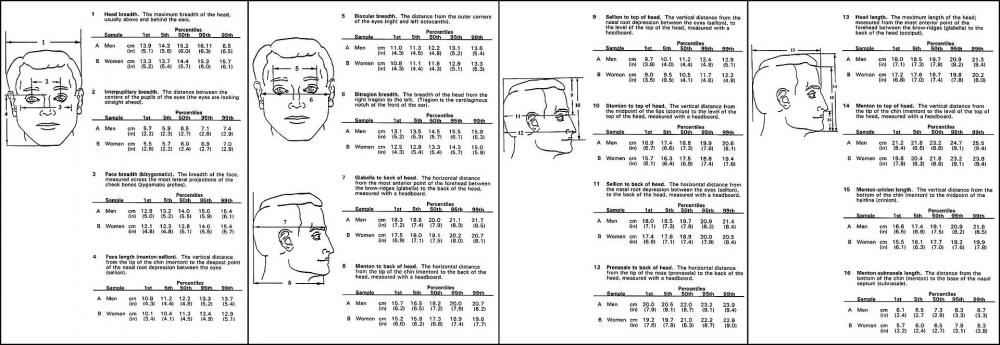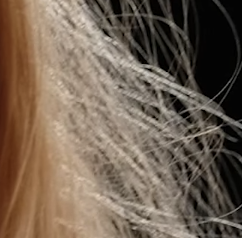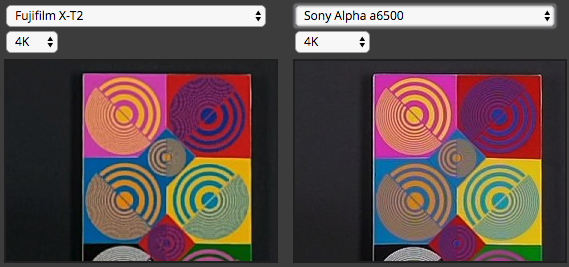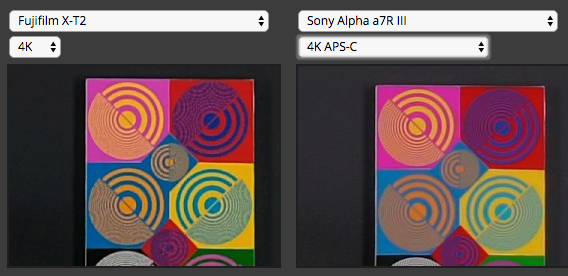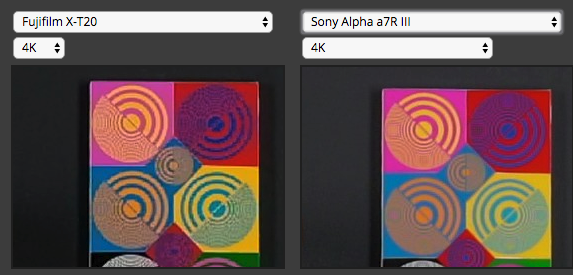-
Posts
1,600 -
Joined
-
Last visited
Content Type
Profiles
Forums
Articles
Everything posted by Don Kotlos
-

Panasonic seems to be announcing something "BIG" on December 15
Don Kotlos replied to seku's topic in Cameras
There are ways to change the ADC in order to improve the performance at higher ISOs. I highly recommend reading this pdf: http://www.photonstophotos.net/Aptina/DR-Pix_WhitePaper.pdf There is also a very informative thesis by Xiangli Li if you want to go in even more depth: http://cmosedu.com/jbaker/students/theses/MOSFET Modulated Dual Conversion Gain CMOS Image Sensors.pdf For example, A7rII uses this patented dual conversion gain http://www.freepatentsonline.com/y2017/0148832.html to get a tiny bit better dynamic range at higher ISOs: -

FCP 10.4 with new CC tools, 360°, HDR and Canon C200 RAW
Don Kotlos replied to Axel's topic in Cameras
Why don't you use the Custom LUT effect that allows that? -

Panasonic seems to be announcing something "BIG" on December 15
Don Kotlos replied to seku's topic in Cameras
There are many different ways of increasing the amount of collected light that is converted to signal GIVEN the sensor size. Few examples: 1. Pixel size. Yes the majority of sensor designs pixels cover less area than the total area of the sensor, so more pixel coverage the more light is gathered. 2. Color filters. Typical Bayern sensors have an RGB pattern that filters away most of the light for each pixel location. The less you filter the more light you collect but the lower the color sensitivity becomes. Other pixel designs offer better light absorption like RGBW or CYGM. 3. Quantum efficiency. That describes the ability of the sensor to respond to the incoming photon signal and the conversion of it to a measurable electron signal. For example BSI technology moves the readout circuitry from between each pixel’s microlens and photodiode to behind the photodiode layer allowing more light to reach the light-sensitive photodiode. -

Panasonic seems to be announcing something "BIG" on December 15
Don Kotlos replied to seku's topic in Cameras
G9 -
Yeah quite a funky style there @DaveAltizer By the way how is the workflow with A7RIII proxies & FCPX? A7rII had proxies as well, but the names were different between the clips so it was useless for any proxy work. Also brighter apertures help a lot for AF speed in low light conditions, so if events is your gig then a f/2.8 or less would make a big difference.
-
Without disagreeing with the overall need to overcome our internet addiction, we have to be careful of what effect abandoning these net neutrality rules could have on the society. The problem is that SOME sites could have 56kbps and OTHERS could have 1000000Kbps. And guess what, people stay longer on sites that load faster. Now what happens when my ONLY internet provider doesn't want me to read certain news outlets? We have a very easy way of biasing and manipulating masses of people. What do those people do? Elect idiots that are getting the world closer to catastrophic event, either by global warming or nuclear holocaust. And it is not that I am being gloomy, that has already happened in the microenvironment of Facebook, and now it is allowed for any type of internet interaction.
-
Not necessarily. From what I have seen there is little difference between 4K 24p 10bit 150 inter vs 400 intra. At 60p the difference will be even smaller.
-
Yep its fine. You can even stack multiple rec709 if you wish.
-

Panasonic seems to be announcing something "BIG" on December 15
Don Kotlos replied to seku's topic in Cameras
With an ISOless sensor it is true that differential pixel gain wouldn't change the total dynamic range of the sensor. For example thats why a high ISO is used with S-log in Sony. There is underexposure behind the scenes and then pull up. But not all cameras have this and in many cases amplification does help reduce the noise. Also there is preprocessing done even in the RAW data. Fuji has implemented a spatial noise reduction in each channel. Here is the amplitude map of the fft in the raw red channel information from a 6400 iso file: This nice reduction of amplitude in the high frequencies is a typical sign of spatial filtering. Now to the original point, I also think that Quad Bayer Coding HDR is done with different temporal windows but with the same onset time. "The IMX294CJK uses a Quad Bayer structure, and outputs data binned in 2 × 2 pixel units in normal mode. In HDR mode, integration can be divided into long-time integration and short-time integration for each 2 pixels in the Quad array (Figure 1). In this case there is no time difference between long-time integration and short-time integration, which realizes HDR with little blending offset when imaging moving subjects (Photograph 3)." -

Color-matching the Canon 1DC with the Canon 5D MKIII (RAW)
Don Kotlos replied to Ty Harper's topic in Cameras
Yep -

Color-matching the Canon 1DC with the Canon 5D MKIII (RAW)
Don Kotlos replied to Ty Harper's topic in Cameras
Yeah you ll get best results when done at 2 or 3 different temperatures -

What Micro Four Thirds lenses have linear focusing rings?
Don Kotlos replied to Inazuma's topic in Cameras
I forgot to add the excellent Olympus 17mm f/1.8! -
The discrepancy most probably comes from the fact that the calculator gives you the distance from the edge of the lens whereas the distances on the lens itself are measured from the sensor. And that was a long lens In my calculations in the previous page from the horizontal field of view , again I see the same thing -> m4/3 sensor.
-
@Neumann Films You didn't even need to give us the anamorphic ratio since we can use the vertical angle of view.. In any case the horizontal field of view is ~35-40 degrees, which means a bit more than half of that without the anamorphic adapter with the 35mm lens. So it is a m4/3 sensor
-
Let's be realistic here, there is no way GH5s will have a S35 sensor. I can't think of any native m4/3 mount lenses that cover S35. JVC could pull that off because they have no lenses anyways, so by using a S35 users could adapt most of their lenses. As far as price goes, the GH5 will still be an excellent choice for half the price of the new GH5s. Even now you will be lucky to get $1500 for your GH5, and when the new one is announced I doubt it would be higher than $1300. I also can't see them improving the lowlight/DR much if they keep the same sensor. Not enough to justify an upgrade anyways. In any case, I bet Luke is having a great time reading our halfass analysis.
-
These are just some examples: https://www.freepress.net/blog/2017/04/25/net-neutrality-violations-brief-history And keep in mind that an FCC report found that only a little more than one-third of the population had more than one internet provider that offered speeds of 25 Mbps or more, the FCC's minimum definition of broadband. https://apps.fcc.gov/edocs_public/attachmatch/FCC-16-6A1.pdf Remember how big companies fought Google fiber or other government entity from installing and providing internet? Just one example out of many: https://newrepublic.com/article/102699/rural-broadband-internet-wifi-access Or have divided the areas between them: https://www.publicintegrity.org/2015/04/01/16933/how-broadband-providers-seem-avoid-competition Personally I live in the center of one of the largest cities in US and my only choice is ATT. I pay ~80$ for ~25mbps similar to the price that Google fiber is charging for 1gbit. Specifically for net neutrality, expecting companies to be ethical is like expecting Santa to deliver your presents. https://en.m.wikipedia.org/wiki/Right_to_Internet_access
-

What will a mirrorless camera be like in 2023?
Don Kotlos replied to Oliver Daniel's topic in Cameras
Oliver don't make things even harder. I can't buy a GH5 cause GH5s is coming. I can't buy an E-M1mkii either cause the new E-M5mkiii is coming. A7rmkiii? No, because the A7smkiii is coming. An X-T2? How can I when the X-H1 is coming? Of course I can't buy Canon or Nikon cause their kickass FF mirrorless is about to unveil for few years now. Terrible christmas I am telling you. Now I will have to use all these lousy cameras that already have everything that I have ever wished for. -
Sensor size would be important to know as well since we care more about angle of view and DoF. 35mm @f1.4 on FF would be my pick.
-
Thanks Dave.
-

Ever seen a film like this? Limited motion/Cinemagraphs
Don Kotlos replied to kaylee's topic in Cameras
Yeah that looks good. Sounds good as well -
If you still have your Canon cameras it would be great to see how well you can match the colors by playing with the picture profiles. Cine2/cine4 with sgamut3.cine/cinema/pro and a boost in saturation and red color depth would be a great starting point . Of course comparing the AF tracking between them would also be great. Rolling shutter differences between FF and S35 maybe? Thanks, and enjoy the camera!
-
I did not. My point was that the advantages that X-trans design might hold in stills it works against it in video. In the dpreview examples you can see than aliasing is still a problem even after oversampling. Usable definitely yes, but perfect as with a bayer oversampled image no. For example at 1:16 in video that you attached the bright part of the hair looks like mush because of aliasing: You wouldn't see this with an A6500. Now if they somehow manage to do the whole sensor readout and apply the same algorithm as in stills it could be better, but they would still have to improve the rolling shutter cause it is bad. Now don't get me wrong, I have two Fuji cameras and I would love to get an X-H1.
-
I have the X-E3 and the stills are amazing. Fuji is the only company that I trust shooting jpegs, not only because of color but because the have this very organic noise with no compression artifacts. But in practical everyday use for video it does not look good. Believe me that you will notice the aliasing. Any type of fine pattern like hair for example does not look great. Forget about deep DoF outside shots. I would be crazy to not shoot video with the A7rII even in FF mode, but yeah for stills the Fuji is a joy to use.
-
I have yet to see any advantage of the X-Trans sensor with video. The X-trans design might work alright for photographs, but for video it is much worse than a typical Bayer design. I would be glad if Fuji dropped it from their X-H1. That is due to two main factors : 1. Demosaicing x-trans design is much more computationally intensive 2. It is much more sensitive to undersampling For optimal performance they would have to sample the whole sensor and use their fancy algorithm which I don't think they are doing with the X-T2. Look at how A6500 or the A7rII/III can give better results than the X-T2 with similar sampling. If you undersample differences become even larger. See the terrible aliasing with X-T20 compared to a similar sampling with A7rIII. The difference in rolling shutter between X-T2 and A6300 is not that big and is quite terrible for both really. I consider anything above ~20ms to be not great. For example GH5 is pretty good at this: GH5 --------------- 15.0 ms a7R II 4K FF ------ 19.9 ms XT2 4k ------------ 30.7 ms a7R II 4K S35 ----- 33.3 ms a6300 4K 24fps ---- 39.0 ms XT20 --> Doesn't look great


